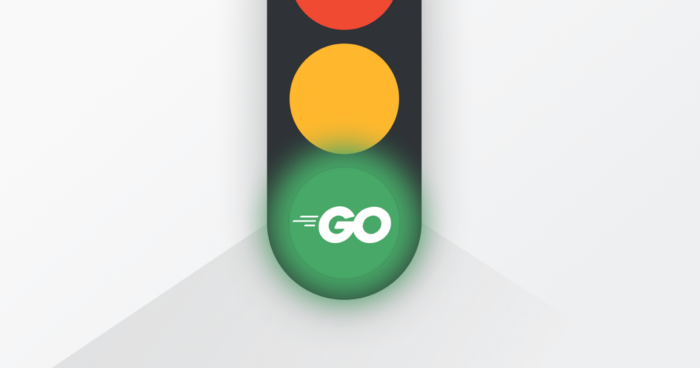Substantiated of Google’s critical boundaries in 2007, Go was crafted by Robert Griesemer, Rob Pike, and Ken Thompson with a clear vision. These pioneers aimed to develop a language that joined together the effectiveness and safety and security of statically keyed in languages with the simplicity of shows and network efficiency that modern-day projects demand.
From its beginning, Golang laid out to resolve certain issues plaguing software advancement, such as cumbersome code maintenance, sluggish compilation times, and the intricacies of concurrent programs. The language was designed to streamline the coding process, make designer performance much better, and use a method to building scalable and high-performance applications. As we check out the expanding golang advancement solutions popularity, we’ll delve into exactly how Golang’s one-of-a-kind qualities have moved it to come to be a recommended tool for software application designers.
Simplicity and Readability

At the core of Golang’s style viewpoint lies a commitment to simplicity and readability. Unlike various other programs languages that typically are quite challenging to learn as a result of complex phrase structure and nuanced rules, it stands apart with its uncomplicated and clean syntax. This clearness increases the discovering process for new programmers and helps with code evaluation and cooperation.
Think about, for example, the comparison between Golang and Java. Java, with its verbose phrase structure, can make even easy jobs appear complicated, particularly to novices. Golang, on the various other hand, selects brevity and openness. This brevity converts right into tangible benefits for software application growth. Clear, readable code is easier to preserve, debug, and extend, which consequently enhances efficiency and reduces the probability of errors.
What is even more, its emphasis on simplicity does not compromise its power. The language supplies a rich collection of attributes, such as Goroutines and channels for concurrency, that enable developers to deal with complicated issues. By focusing on readability, Golang fosters a setting where designers can focus much more on solving real-world issues and less on understanding the language itself.
Performance


Performance can be the difference between an application that thrills individuals and one that annoys them. Below, it becomes an awesome contender, known for its outstanding execution speed. When compared to languages like Python or Java, Golang frequently leads the pack, especially in situations that call for concurrent processes and high-speed implementation.
Criteria reveal the story: Golang’s performance, specifically in backend advancement and cloud services, is not nearly raw speed but additionally concerning how it utilizes resources. Unlike Python, which is translated and can be slower for CPU-bound jobs, it is compiled directly right into maker code, that makes it naturally faster for numerous applications. Java, known for its virtual machine expenses, encounters tight competitors from Golang’s light-weight execution version.
This efficiency is especially crucial in backend advancement, where action times and source application can substantially influence scalability and costs. In cloud solutions, where sources are metered and latency is crucial, its lean design means applications can do a lot more with less– a vital attribute in today’s cost-conscious and performance-hungry technology setting.
Furthermore, Golang’s integrated assistance for concurrency, through Goroutines and networks, enables programmers to write normally efficient programs that make complete use of readily available processing power without the heavy training and boilerplate code required by other languages. This contributes to its performance benefits and lines up flawlessly with the demands of modern, scalable applications that run over distributed networks.
Concurrency Assistance


Reliable monitoring of concurrent procedures can significantly affect application performance and scalability. Golang’s strategy to concurrency, distinctive from other shows languages, is one of its most engaging features. At the heart of this version are Goroutines and networks, developed to make concurrent programming instinctive and efficient.
Goroutines are light-weight strings handled by the Go runtime. Unlike standard strings, they require much less memory expenses and are less complicated to develop and take care of. Channels, on the various other hand, provide a powerful device for Goroutines to interact with each various other, permitting risk-free and synchronized data exchange. This model streamlines the advancement of complicated simultaneous applications, making code much easier to create and comprehend.
Real-world applications where its concurrency features radiate include:
- Web Web Servers and APIs : Golang can manage several demands concurrently without straining system sources, making it perfect for high-traffic web servers and APIs.
- Data Handling : Applications that require handling large datasets can benefit from its ability to perform several procedures in parallel, speeding up information analysis and control.
- Cloud Providers : Its concurrency model’s scalability is ideal for cloud-based applications, where sources can be dynamically designated and handled.
- Networked Applications : For applications that need high network throughput, such as chat web servers or streaming systems, Golang’s concurrency permits extra effective information handling and transmission.
- IoT Devices : It is increasingly preferred for IoT applications, where handling numerous devices and information streams concurrently is crucial.
Comprehensive Standard Library


Unlike various other shows languages that often require exterior collections for standard capabilities, Golang gives a rich collection of bundles right out of the box, covering a vast array of typical programming tasks. This collection speeds up the development procedure and guarantees uniformity and dependability across tasks.
Key plans in the basic collection that exhibit its utility include:
- net/http : This bundle is a giant for constructing internet servers and customers, providing a straightforward technique to taking care of HTTP demands and reactions.
- io and ioutil : These bundles provide crucial interfaces and utilities for input/output operations, streamlining file handling, information reading, and composing.
- encoding/json : With this bundle, collaborating with JSON data becomes problem-free, permitting very easy serialization and deserialization of organized information.
- html/template : This package is vital for creating HTML result safely and securing applications versus code injection.
- os : Developed for connecting with the os, this package facilitates file system operations, atmosphere variables handling, and procedure monitoring.
In contrast, languages like Python or JavaScript frequently rely heavily on third-party collections for comparable performances, which can cause incongruities and added dependences. For instance, while Python has a common collection, developers regularly transform to frameworks like Flask or Django for internet advancement or Pandas for data manipulation, which includes intricacy and variant to the growth process.
Golang’s all-encompassing typical collection simplifies network programs, information handling, and other typical jobs yet additionally improves code maintainability and compatibility. By lessening outside dependencies, it offers a regular, well-supported toolkit, which makes it possible for programmers to focus on addressing troubles instead of wrestling with irregular collections or packages.
Robust Tooling and Documentation


The Golang ecosystem is about the top quality tools and paperwork that sustain it. This support network considerably enhances the designer experience.
Trick devices in the community consist of:
- Go formatter (gofmt) : This important tool immediately styles Go code. By eliminating debates over format, gofmt allows developers to focus on the logic and capability of their code.
- GoDoc : This device instantly produces paperwork from the code itself. Unlike other languages where documentation can be viewed as a separate task, GoDoc integrates documentation straight with the codebase, making it much easier to maintain and recognize.
- Built-in testing framework : Golang features a screening suite that sustains system screening out of the box. This incorporated approach motivates test-driven development and contributes to the overall dependability of applications.
Additionally, the neighborhood proactively adds to the language’s paperwork and toolset, continually refining and broadening resources. This cumulative initiative results in an ever-improving collection of standards, examples, and finest techniques that support both brand-new and seasoned programmers.
The comparison with various other languages can be raw. In ecosystems where tooling and paperwork are fragmented or irregular, designers may fight with obsolete resources or inappropriate devices. In Golang, nevertheless, the mix of official tools like gofmt, GoDoc, and the testing framework, along with community contributions, provides a cohesive and helpful environment.
Expanding Community and Market Adoption


The Golang community is a vibrant and expanding team all compiled by the language’s effectiveness, simpleness, and power.
Numerous significant companies have openly welcomed Golang, integrating it into their growth jobs and adding to its ecosystem. Giants like Google, Uber, and Dropbox have actually taken on Golang to ideal their systems’ scalability and efficiency. These endorsements serve as powerful testimonies to its reliability and efficiency in managing massive, high-performance applications.
In addition, its popularity is measurable. Programmer studies and work market evaluations mirror an increasing need for Golang skills. According to industry studies, it constantly places high amongst one of the most loved and wanted languages. This rise in popularity is paralleled by an expanding number of task postings looking for Golang knowledge, which signals a durable work market for designers proficient in the language.
Conclusion
The trip through Golang’s functions, community, and market fostering illustrates why this shows language has caught the focus and excitement of the software program advancement globe. It sticks out for its simplicity, efficiency, and its distinct technique to programming challenges. These qualities, integrated with its powerful concurrency model and extensive basic collection, make it a favored choice for designers looking for to develop scalable, high-performance applications.
The real-world endorsements by leading tech companies and the expanding demand in the work market additionally confirm Golang’s importance. As technology evolves, the concepts on which Golang is constructed– quality, performance, and usefulness– continue to be appropriate, placing it as a principal in the future of software program growth.
Looking in advance, Golang’s fostering is most likely to broaden right into brand-new tech locations, including cloud solutions, decentralized technologies, and large information processing. Its layout makes it fit to address the challenges of next-generation technology landscapes, from managing enormous simultaneous operations to streamlining complex programs standards.

